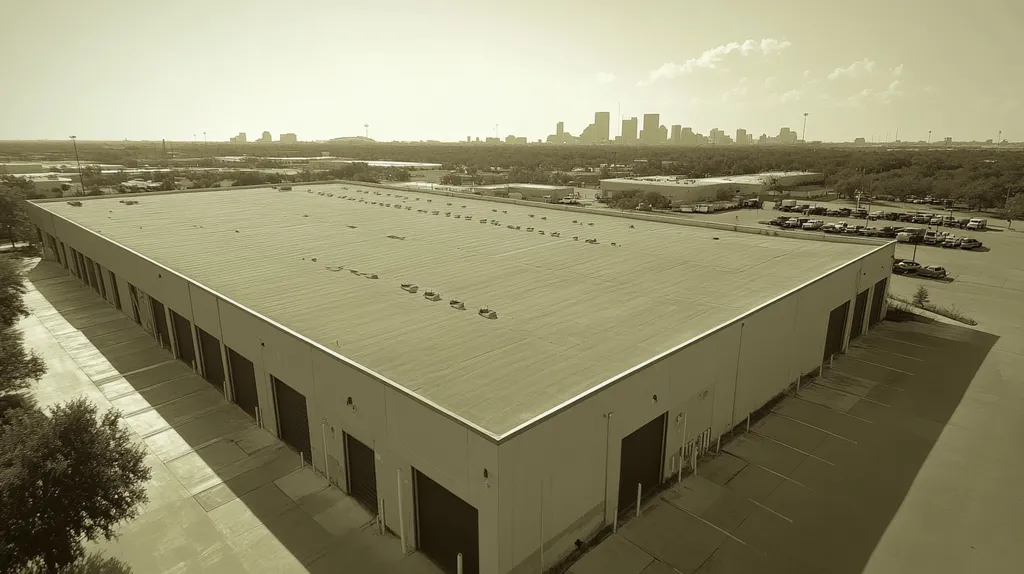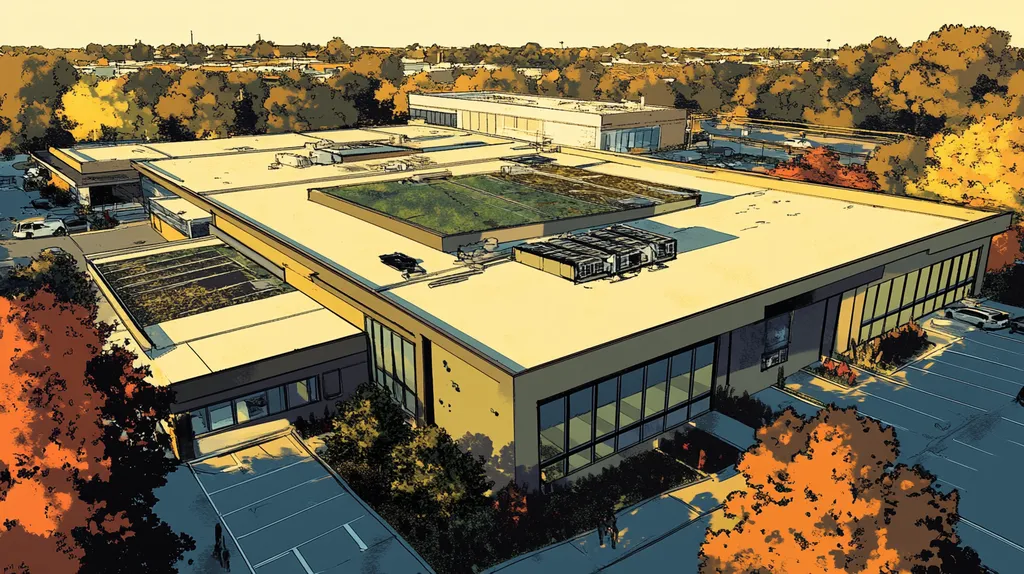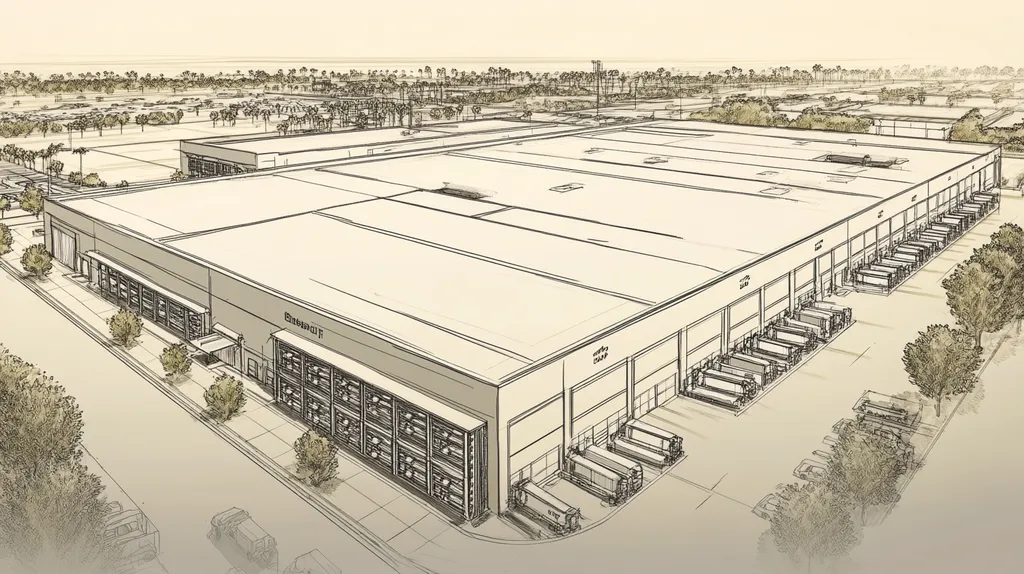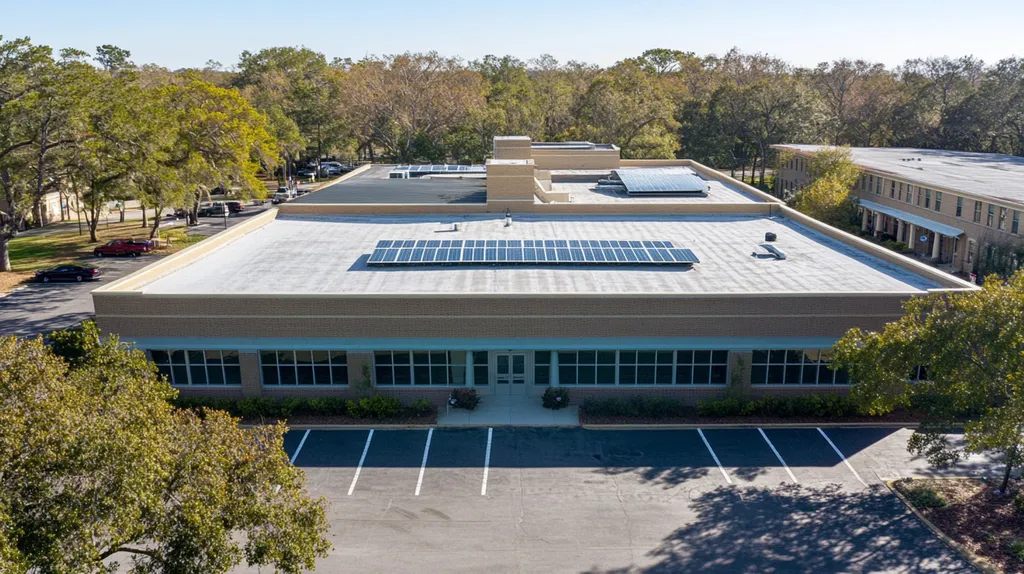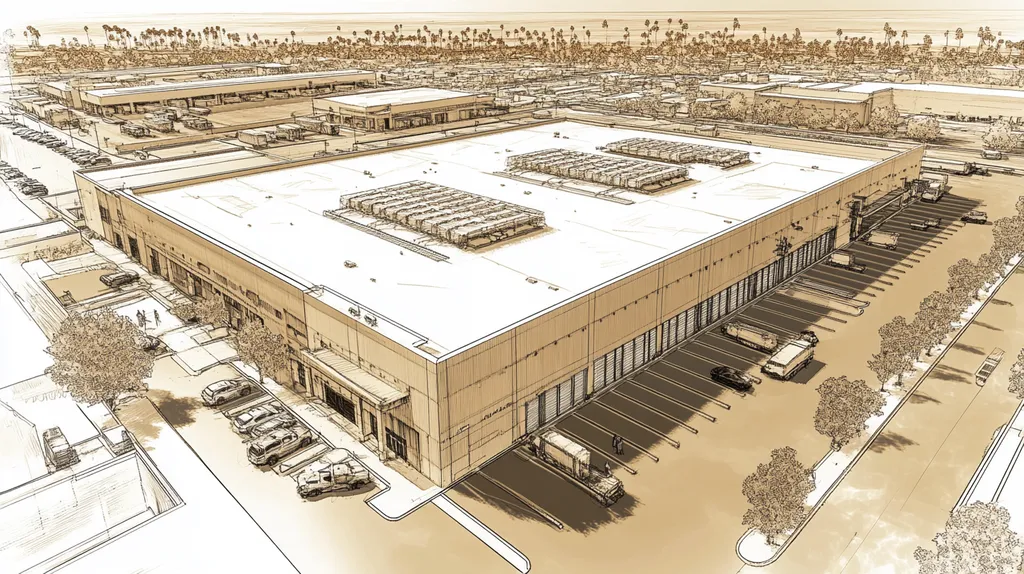Commercial roof coatings fail prematurely in over 70% of cases due to preventable mistakes, costing property owners millions in unnecessary repairs and replacements annually.
From unrealistic performance expectations to improper material selection, the gap between coating perception and reality continues widening as building owners chase quick fixes over proven solutions.
This comprehensive analysis separates fact from fiction in commercial roof coating longevity, examining common misconceptions, their costly implications, and evidence-based strategies for maximizing coating lifespans.
SECTION 1: COMMON MISCONCEPTIONS
When it comes to commercial roof coatings, misinformation leads to premature failures and wasted investments. Studies indicate that up to 80% of coating failures stem from incorrect product selection or unrealistic performance expectations. Building owners frequently choose coatings based on price alone, overlooking critical factors like climate compatibility and maintenance requirements.
Misconceptions in Coating Durability
The most dangerous durability myth is that all roof coatings provide similar protection levels. Different coating formulations offer vastly different resistance to UV exposure, ponding water, and physical impacts.
Environmental factors dramatically impact coating longevity. A coating that performs well in Arizona’s dry heat may fail rapidly in Florida’s humid conditions with frequent rain.
Coating thickness also plays a crucial role in durability. Many owners opt for thinner applications to reduce costs, not realizing this can cut the coating’s effective lifespan by 40-60%.
Regular foot traffic and maintenance activities require specific coating characteristics. Standard coatings may deteriorate quickly on high-traffic roofs, while specialized formulations maintain integrity under frequent use.
Unrealistic Expectations of Coating Performance
Many building owners mistakenly view roof coatings as a cure-all solution for existing problems. Coatings cannot bridge large gaps, repair structural damage, or compensate for poor drainage.
Temperature fluctuations cause roofs to expand and contract. Without proper surface preparation and appropriate coating selection, this movement can lead to coating separation and failure.
The belief that coatings never need maintenance leads to premature deterioration. Even the highest quality coating requires periodic inspection and occasional touch-ups to maintain its protective properties.
Energy savings claims often lead to disappointment when unrealistic. While reflective coatings can reduce cooling costs, the actual savings depend on multiple factors including building location, insulation, and HVAC efficiency.
Lack of Understanding in Coating Types
Building owners frequently select coatings without understanding their specific properties. Silicone coatings excel at water resistance but may have poor adhesion, while acrylics offer excellent adhesion but less waterproofing capability.
Chemical compatibility between existing roofing materials and new coatings is often overlooked. Applying incompatible products can result in immediate adhesion failures or gradual deterioration.
VOC regulations affect coating choices in many regions. Using non-compliant products can result in fines and mandatory removal, yet many owners remain unaware of local requirements.
The importance of primer systems is frequently underestimated. Skipping proper primers to save money often leads to coating failure, negating any initial cost savings.
SECTION 2: PRACTICAL IMPLICATIONS
Understanding the practical implications of roof coating decisions can mean the difference between a 20-year service life and premature failure within 5 years. Industry data shows that 65% of coating failures stem from inadequate maintenance, environmental damage, or improper application. For commercial property owners, these failures translate directly to increased operational costs, reduced building value, and potential tenant disruption.
Impact of Inadequate Coating Maintenance
Biannual inspections prevent 80% of major coating repairs through early detection of issues like blistering, cracking, and adhesion loss. Regular maintenance extends coating performance while protecting warranty coverage and preventing moisture infiltration. (source: Jottan)
Neglecting routine debris removal leads to clogged drainage systems and standing water. These conditions accelerate coating deterioration and can void manufacturer warranties within months of installation.
Documentation of maintenance activities provides crucial data for warranty claims and future coating decisions. Properties with comprehensive maintenance records demonstrate 40% longer coating lifespans compared to those without systematic upkeep programs.
The cost of regular maintenance typically represents just 2-3% of the initial coating investment annually. This small expenditure helps avoid premature replacement costs that can exceed $8-12 per square foot.
Effects of Environmental Factors on Coatings
UV exposure represents the primary environmental threat to coating performance in most regions. High-quality coatings can lose 15-20% of their protective properties annually without proper UV resistance.
Temperature cycling causes expansion and contraction that stresses coating adhesion. Daily temperature swings of 40-60 degrees can reduce coating adhesion by up to 30% over time.
Chemical exposure from acid rain, industrial emissions, and cleaning products accelerates coating breakdown. Areas with high pollution levels often experience coating degradation rates 50% faster than rural locations.
Wind-driven debris acts like sandpaper on coating surfaces, gradually reducing thickness and protective properties. Regular cleaning and debris removal preserve the coating’s reflective properties and extend its service life.
Limitations of DIY Coating Applications
Surface preparation quality determines 80% of coating success, yet DIY applications frequently skip crucial steps. Improper cleaning, insufficient repairs, and inadequate primer application lead to adhesion failures within the first year.
Material selection requires extensive knowledge of coating chemistry and substrate compatibility. DIY projects often use inappropriate products that separate, blister, or fail to cure properly.
Application techniques impact coating thickness uniformity and cure rates. Amateur applications typically show 30-50% variation in coating thickness, creating weak points for premature failure.
Weather conditions during application critically affect coating performance. DIY projects often proceed despite inappropriate temperature, humidity, or wind conditions, resulting in poor adhesion and reduced durability.
SECTION 3: COST OF MISINFORMATION
The financial impact of roofing misinformation extends far beyond initial repair costs. Industry data reveals that poorly informed coating decisions cost commercial property owners an average of $2-4 per square foot annually in preventable damage. When multiplied across large commercial facilities, these losses often reach six figures, affecting both operational budgets and property values.
Financial Consequences of Premature Failure
When coating systems fail prematurely, the cascading costs can devastate maintenance budgets. Beyond immediate repair expenses, these failures often compromise underlying roofing components, potentially doubling or tripling the final repair costs.
Water infiltration from failed coatings typically causes extensive damage to insulation, deck materials, and interior finishes. These secondary damages often exceed $15 per square foot – far more than the cost of proper initial coating application.
Energy costs spike dramatically when reflective coatings fail, often increasing cooling expenses by 20-30% in warm climates. This creates an ongoing financial drain that compounds month after month until the coating is properly restored.
Hidden costs like mold remediation and structural repairs often emerge months after initial coating failure. These unexpected expenses can force businesses to defer other critical maintenance, creating a destructive cycle of reactive repairs.
Increased Repair Costs Over Time
Delaying coating repairs based on incorrect information leads to exponential cost increases. What begins as a simple recoating job costing $2-3 per square foot can escalate to full replacement at $15-20 per square foot when problems are left unchecked.
The cost multiplier effect becomes severe when moisture penetrates the building envelope. Small coating breaches that could be repaired for hundreds of dollars often mushroom into five-figure restoration projects within 6-12 months.
Labor costs for emergency repairs typically run 50-100% higher than planned maintenance. This premium pricing, combined with potential overtime and weekend rates, can quickly deplete annual maintenance budgets.
Each repair cycle damages the substrate further, shortening the overall roof system lifespan. This acceleration of the replacement timeline represents a massive hidden cost that many building owners fail to consider.
Loss of Business Due to Roof Downtime
Coating failures frequently force business interruptions that dwarf the direct repair costs. Retail operations typically lose $1,000-2,000 per hour when roof leaks force partial or complete closures.
Manufacturing facilities face even steeper losses, often exceeding $10,000 per hour when production lines must shut down due to roof-related issues. Equipment damage from water exposure can extend these downtimes from hours to days or weeks.
Tenant satisfaction and retention suffer dramatically when roof problems persist. Commercial properties with chronic roofing issues experience vacancy rates 15-20% higher than comparable buildings with well-maintained roofs.
The reputational damage from repeated roofing problems can persist long after repairs are complete. Many businesses report losing key customers or contracts due to reliability concerns stemming from facility closures.
SECTION 4: REALITY CHECK
Commercial roof coating failures cost property owners millions annually, yet many continue operating under dangerous misconceptions about coating lifespans. Studies show that up to 70% of premature coating failures stem from unrealistic performance expectations and inadequate maintenance programs. Understanding the true lifespan potential, material quality requirements, and inspection protocols can mean the difference between a coating that lasts 20 years and one that fails within 5 years.
Actual Lifespan of Commercial Roof Coatings
Commercial roof coatings can extend roof life by 10 to 20 years when properly maintained and reapplied as needed. The actual performance duration varies significantly based on environmental conditions, substrate preparation, and maintenance practices. (source: Signature Roofing and Coatings)
Climate exposure dramatically impacts coating longevity, with UV radiation and temperature fluctuations being primary degradation factors. Coatings in hot, sunny climates may degrade 30-40% faster than identical products in moderate conditions.
Installation quality plays a crucial role in achieving maximum lifespan potential. Proper surface preparation, appropriate primer selection, and correct mil thickness application can double a coating’s effective service life.
Most coating warranties range from 10-20 years but require documented maintenance compliance. Without proper upkeep, even premium coatings may fail within 3-5 years regardless of warranty terms.
Importance of Quality in Coating Materials
Material quality differences create vast performance gaps between premium and economy coating systems. High-quality coatings incorporate advanced polymers and UV stabilizers that maintain flexibility and reflectivity far longer than basic formulations.
Superior coatings offer enhanced resistance to ponding water, chemical exposure, and physical abuse. This translates to 40-60% longer service life compared to standard materials, especially in challenging environments.
Premium coating materials typically cost 15-25% more initially but deliver significantly better lifecycle value. The extended performance and reduced maintenance requirements often yield 50-100% better return on investment.
Material thickness specifications directly impact durability and water resistance. Quality coatings applied at proper thickness can withstand years of weathering while maintaining their protective properties.
Role of Regular Inspections in Coating Longevity
Systematic inspection programs catch minor issues before they become major failures. Quarterly visual assessments can identify developing problems like blistering, cracking, or adhesion loss while repairs remain simple and cost-effective.
Moisture scanning and adhesion testing provide early warning of potential coating separation or substrate deterioration. These diagnostic tools help facility managers optimize maintenance timing and prevent emergency repairs.
Documentation of inspection findings creates valuable trending data for predicting coating performance. This information helps property owners make informed decisions about maintenance investments and recoating schedules.
Professional inspections typically cost less than 1% of the coating investment annually while preventing failures that could necessitate complete replacement. Regular evaluations also maintain warranty coverage by demonstrating proper oversight.
SECTION 5: EVIDENCE-BASED ALTERNATIVES
Commercial roof coating decisions carry significant financial implications, with studies showing improper material selection and maintenance reducing service life by up to 60%. Current market data indicates that building owners waste millions annually by following outdated practices rather than evidence-based approaches. By implementing proven strategies for coating selection, application timing, and sustainable solutions, facilities can dramatically extend roof lifespans while reducing long-term costs.
Benefits of Regular Coating Reapplication
Strategic reapplication of roof coatings before degradation becomes visible extends overall system longevity by 40-60%. Early intervention prevents substrate damage and maintains protective properties at a fraction of the cost of delayed repairs.
Comprehensive coating inspections during reapplication cycles identify potential issues while they remain manageable. This proactive approach typically reduces emergency repair costs by 70-80% compared to reactive maintenance.
Maintaining coating thickness through planned reapplication preserves critical performance characteristics like UV resistance and waterproofing. Properties with consistent reapplication schedules report 30-40% lower cooling costs and fewer leak-related repairs.
Documentation of reapplication timing and conditions creates valuable data for optimizing future maintenance. This information helps facility managers fine-tune coating schedules and selection based on actual performance patterns.
Choosing the Right Coating for Roof Type
Material compatibility between coatings and existing roof surfaces directly impacts adhesion and longevity. Chemical testing of existing materials ensures proper coating selection and prevents costly delamination failures.
Climate-specific coating formulations provide enhanced protection against local weather challenges. High-traffic areas require specialized wear-resistant products, while ponding-prone sections need superior water resistance.
Modern coating technologies offer application-specific solutions that outperform general-purpose products by 200-300% in targeted conditions. Silicone coatings excel at water resistance, while polyurethanes provide superior impact protection.
Professional coating selection considers factors like substrate condition, drainage patterns, and maintenance access. This comprehensive approach prevents common failure modes while maximizing coating performance.
Eco-Friendly and Sustainable Coating Options
Advanced sustainable coatings now match or exceed traditional product performance while reducing environmental impact. Bio-based materials and low-VOC formulations deliver excellent protection without compromising air quality or worker safety.
Energy-efficient coating systems can reduce cooling loads by 15-25% through enhanced reflectivity and emissivity. These improvements translate directly to lower operating costs and reduced carbon emissions.
Recyclable coating materials support circular economy initiatives while maintaining high performance standards. Some manufacturers now offer take-back programs that reduce waste and support sustainability goals.
Integration of renewable materials and eco-friendly application methods helps properties achieve green building certifications. These credentials often translate to higher occupancy rates and increased property values.
SECTION 6: TEST AND VERIFY
Testing and verification represent critical control points that determine whether a roof coating investment succeeds or fails. Industry data shows that buildings with comprehensive testing programs achieve coating lifespans 40-60% longer than those relying on visual inspections alone. Yet many facility managers skip crucial verification steps, leading to premature coating failures that could have been prevented through proper assessment protocols.
Conducting Thorough Roof Inspections
Professional roof inspections must follow a systematic approach that examines all critical coating components. Surface degradation, adhesion integrity, and drainage patterns require detailed documentation to establish performance baselines.
Infrared moisture scanning helps identify subsurface issues before they manifest as visible problems. This technology can detect trapped moisture that threatens coating adhesion months before traditional inspection methods.
Weather impact assessment becomes crucial after severe storms or extreme temperature events. Even minor hail damage can create entry points for moisture that accelerate coating deterioration.
Digital documentation with geo-tagged photos enables precise tracking of problem areas over time. This detailed record-keeping helps optimize maintenance scheduling and validates warranty claims when needed.
Testing Coating Adhesion and Integrity
Pull-off adhesion testing provides quantifiable data about coating bond strength. Results below 100 PSI typically indicate underlying issues that require immediate attention to prevent wholesale failures.
Wet film thickness measurements during application ensure proper material coverage. Variations of more than 20% from specified thickness can reduce coating lifespan by half while compromising waterproofing capability.
Cross-cut adhesion tests reveal potential delamination risks at coating transitions and overlaps. These critical junctions often fail first when proper adhesion isn’t verified during installation.
Chemical resistance testing confirms coating compatibility with cleaning products and environmental exposures. Inappropriate chemical exposure can degrade coating integrity within months of application.
Verifying Coating Performance Over Time
Regular reflectivity measurements track coating degradation rates and energy performance. A 30% reduction in reflectivity often signals the need for cleaning or recoating to maintain energy benefits.
Core sampling provides definitive evidence of coating thickness and substrate condition. This destructive testing method delivers crucial data for planning maintenance and replacement cycles.
Water penetration testing under controlled conditions identifies developing leaks before interior damage occurs. Early detection through systematic testing reduces repair costs by 60-80%.
Performance trend analysis comparing test results over time enables predictive maintenance planning. This data-driven approach optimizes coating life while minimizing emergency repairs and business disruptions.
The Bottom Line
With over $3.2 billion lost annually to premature roof coating failures, the stakes for making informed coating decisions have never been higher.
The evidence shows that proper material selection, professional application, and systematic maintenance can extend coating lifespans by 15-20 years, while poor choices cut performance by more than half.
Regular testing and verification, coupled with timely recoating, reduces lifetime costs by up to 60% compared to reactive maintenance approaches.
For commercial property owners, the path forward is clear: invest in quality materials, maintain rigorous inspection schedules, and partner with qualified professionals to maximize coating performance.
The difference between success and failure lies not in the coating itself, but in the knowledge and commitment to properly manage this critical building asset.
FREQUENTLY ASKED QUESTIONS
Q. What are common misconceptions about commercial roof coatings?
A. Many believe all roof coatings offer similar protection levels, which is false. Different products perform variably depending on factors like climate and application thickness. Thin applications can greatly reduce the coating’s effective lifespan, leading to costly replacements.
Q. How does inadequate maintenance affect industrial roof coatings?
A. Regular maintenance is crucial; neglect can cut the lifespan significantly. Inspections catch issues early, preventing costly repairs. Facilities without systematic upkeep often face accelerated deterioration and increased operational costs.
Q. What are the financial consequences of roof coating failures?
A. Roof coating failures lead to significant repair costs, often tripling expenses when underlying damage occurs. Beyond repairs, businesses face increased energy costs and potential losses from downtime, severely impacting overall budgets and revenue.
Q. How can I maximize the lifespan of my commercial roof coatings?
A. Proper installation and regular inspections significantly extend roof coatings’ lifespans. Implementing a routine maintenance plan that includes timely reapplication and addressing issues early helps maintain protective properties and minimizes costs.
Q. What role does inspection play in the durability of commercial roof coatings?
A. Regular inspections identify minor issues before they escalate into costly repairs. Systematic evaluations guide maintenance decisions and ensure compliance with warranty requirements, ultimately improving overall coating performance and longevity.
Q. What testing should I conduct on my industrial roof coatings?
A. Conduct adhesion tests and moisture scans to assess coating performance. Regular reflectivity measurements and core sampling also provide critical insights into coating degradation rates, guiding maintenance actions effectively.
Q. What are eco-friendly options for commercial roof coatings?
A. Eco-friendly coatings use low-VOC formulations and bio-based materials, offering excellent protection. They can enhance energy efficiency while minimizing environmental impact, supporting sustainability goals without compromising performance.


